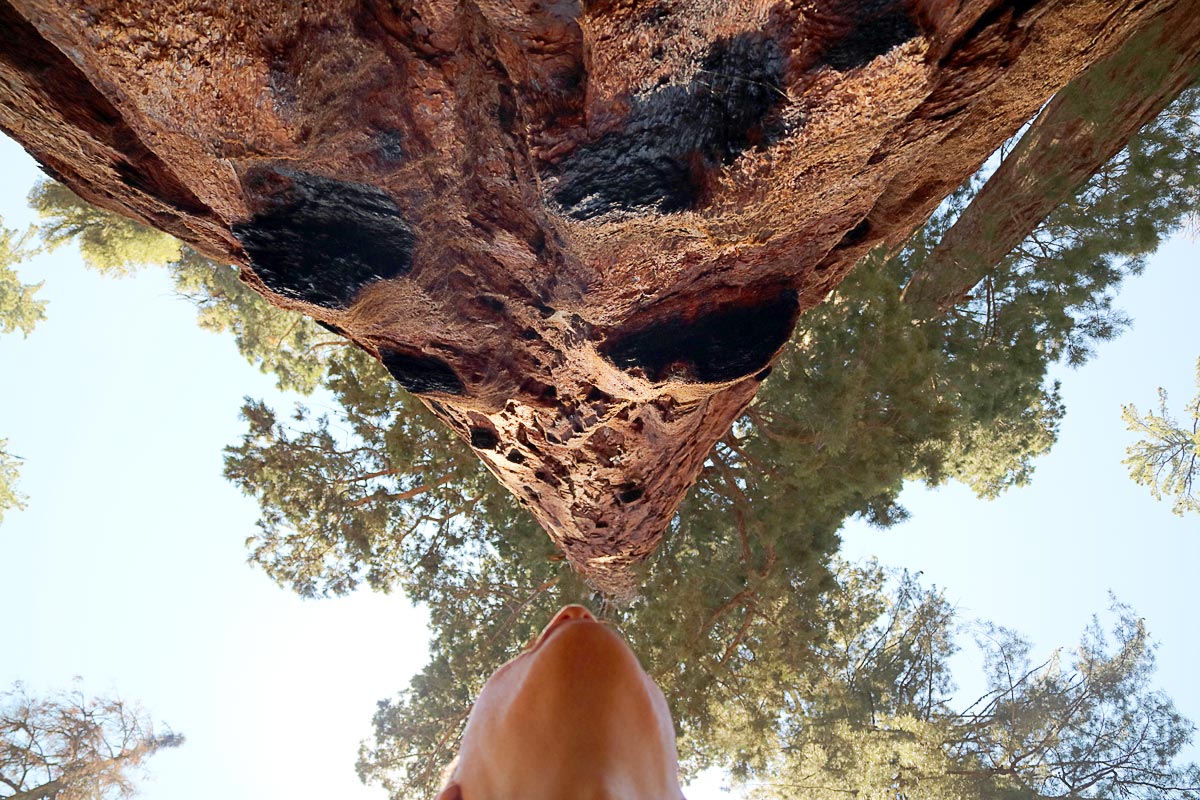
I could live a million years
All along the tomb, in secret in the ruin
Secluded in a marker stone
—R.E.M.
If an ancient, primeval forest is supposed to offer a wayward human spirit a kind of natural reset, a cleansing of ones soul, then I had big hopes for my visit to the mutant behemoth trees that elbow other vegetation out of the way in Sequoia National Park in western California. Because I needed a reset, in a diabetic sense: blood sugars have been generally pretty high lately, brought on almost entirely by stress.
It’s Day 71 of this epic road trip across the United States and it’s been fantastic, but since the twin emergency room adventures of Masayo and I last week have put camping and hiking out of reach I’ve been in a profoundly grumpy mood. Fretting about a medical reality I can’t change, I’m actually making it all worse for myself. You’d think a lifelong Type 1 diabetic would know better, especially one who himself has warned others to beware of stress and its effects on blood sugar.
So my diabetes could use a little attitudinal adjustment. Instead of worrying that the rest of this National Park adventure will be ruined I need to count my blessings: there are still three weeks of fun left and some of the most beautiful Parks are on the horizon. Even if we can’t go hiking in their interiors too much they’re still worth visiting. The hospital visits weren’t even related to diabetes; Masayo seems fine now and so I should just shut up my whining brain.
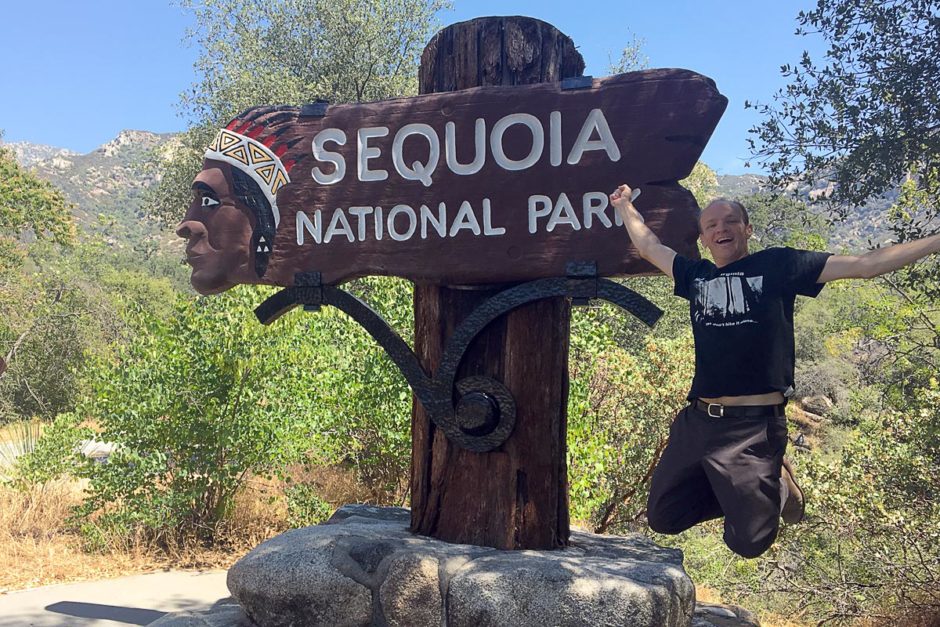
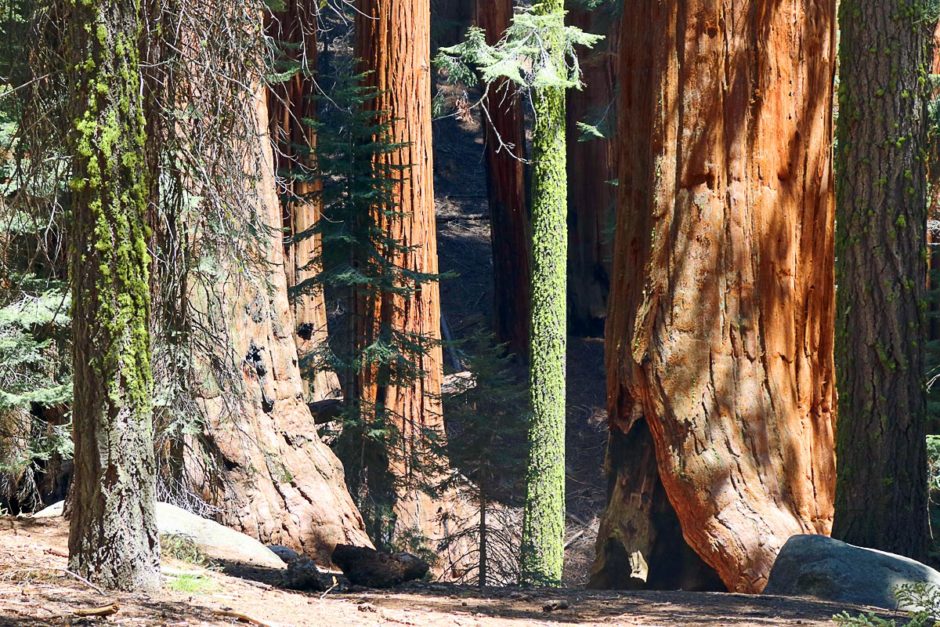
Could be a photo taken millions of years ago.
And so the pressure is on, Sequoia: let your giant trees take me out of myself and put me back on Earth where I can relax and let my BGs glide back down!
First, a note about Sequoia National Park: it’s famous for its gigantic trees, of course, but this Park is only half the story. It borders another National Park called Kings Canyon. Looking at a map, they clearly act as one big Park, something that’s underscored by their administration. The official NPS website treats them as one, as does the official brochure (“Sequoia and Kings Canyon National Parks”).
Perhaps they should go ahead and tie the knot and be joined as one single Park, but they really are in fact different: Sequoia has the big fat trees and Kings Canyon is, well, a big canyon. And I’m pedantic enough to treat them separately: Masayo and I are going to leave Kings Canyon for tomorrow.
Today is Sequoia day. Only!
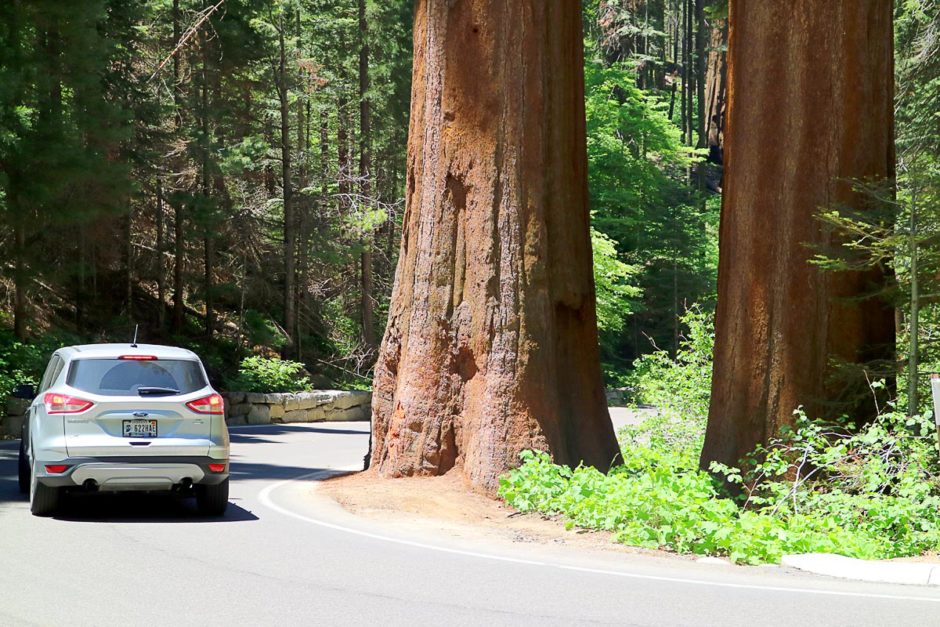
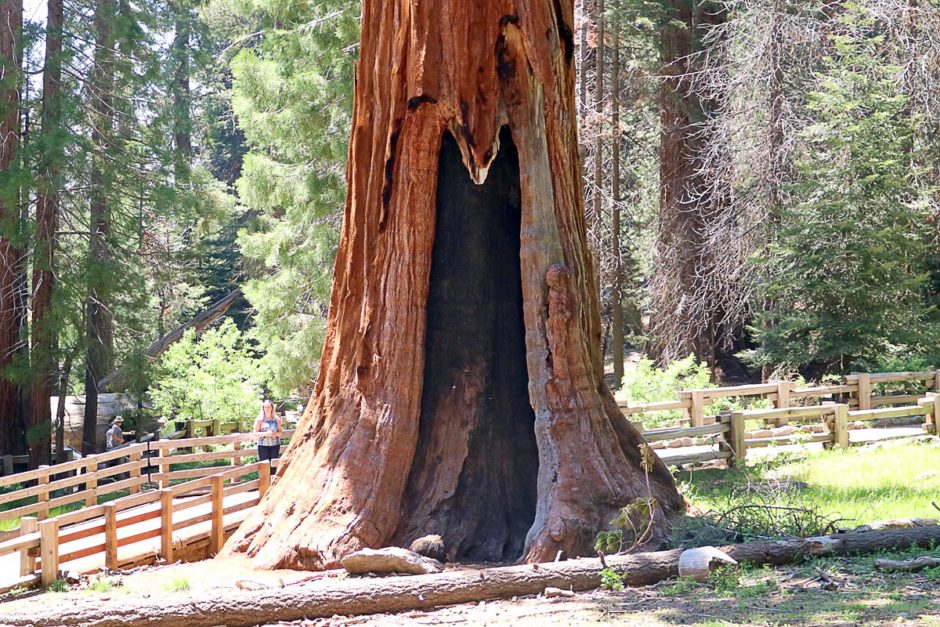
There’s a lovely road that winds through Sequoia National Park and it does indeed carry its drivers into a primeval world at once comforting (that soft sun slanting onto softly glowing reddish brown trees) and spooky (those same sunbeams’ air of ancient timelessness, unconnected to and unconcerned with mere humanity). There are plenty of trees besides sequoias, some skinny and covered in bright green moss and others dark grey and receding into the shadows. But once the big red bosses start showing themselves as you pierce deeper into the Park they immediately take center stage.
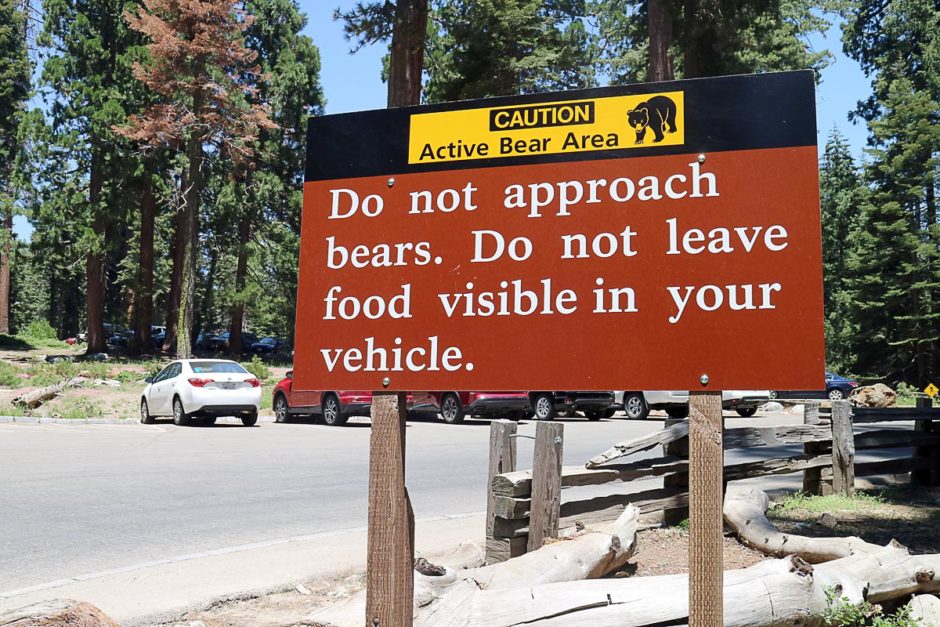
While you’re gawking, bears are scheming.
Sequoia trees, which are related to but separate from the redwood trees of northern California, only grow in this one spot on Earth, the western slopes of the Sierra Nevada mountain range. And they seem proud to rule their special chosen region. As a species they are Earth’s largest living things (by volume, which seems a fair measurement to me) and are not coincidentally among the oldest.
So stunning are their great trunks and the general hushed air of reverence that seems to float in the forest that I could feel the Park working its magic on me. It’s hard to complain about my road trip not being perfect when driving through (and parking and walking around) these benevolent beasts. Surely things couldn’t be more perfect than this!
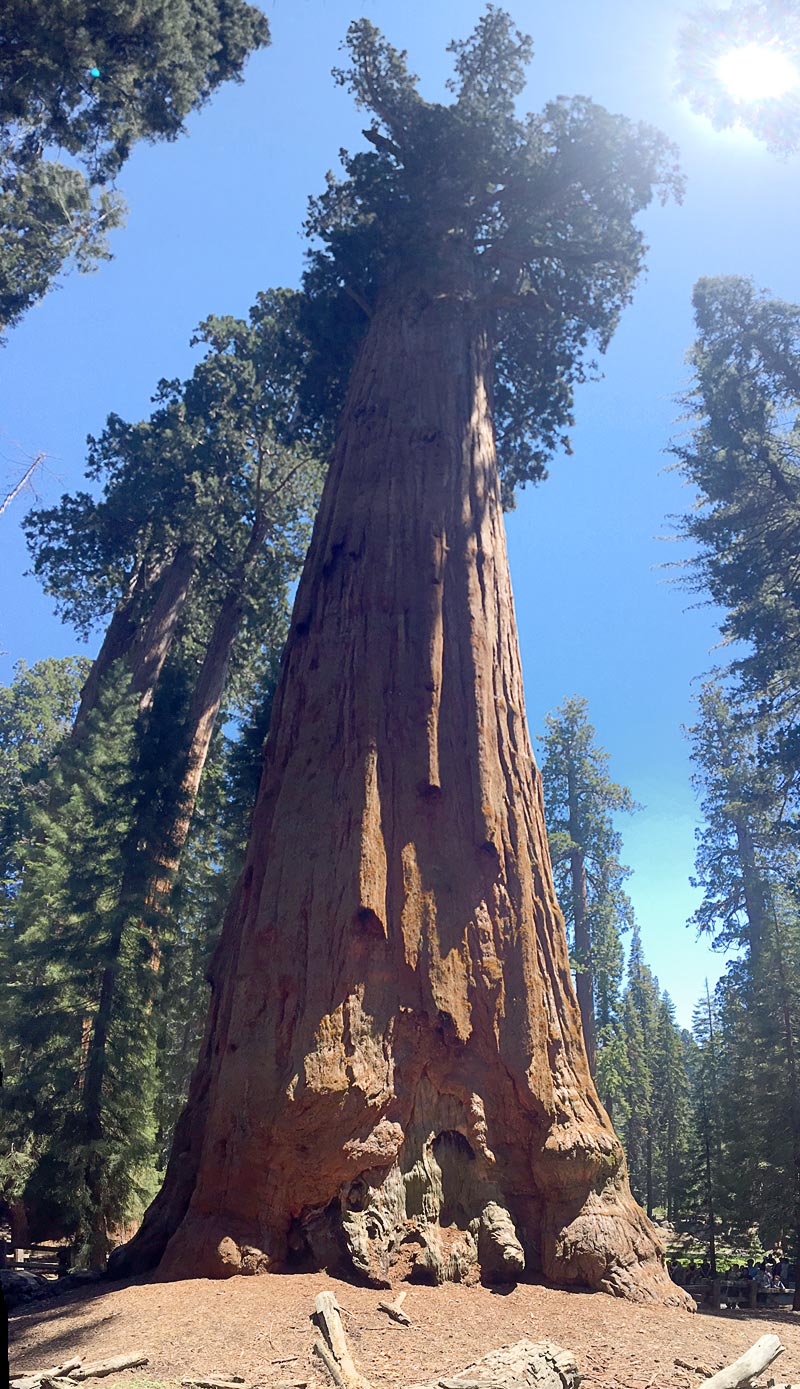
A travel blogger’s dilemma: how to show all of General Sherman on a web page without stretching several screens.
Many of the sequoia trees are just scattered around in random places, easily visible from your car. But the main attraction – the world’s largest tree – has its own approach trail and even its own name: General Sherman.
General Sherman is about 2,000 years old (mere middle age for these trees) and isn’t even completely alive: much of the wood inside and at the top is in fact dead. But the rest is still living and growing. You can decide if you think “the world’s largest living thing” is accurate, but you can’t deny that the thing is gargantuan.
Masayo’s foot, the nine stitches in which came out yesterday, is healing fine and she was able to make it down the short walkway with the other groups of tourists to General Sherman. At the tree is a photo opportunity corner, a cut-out in the railing and a sign on the ground. There was a quick-moving line when we got there, and we waited our turn to get our photos like everyone else.
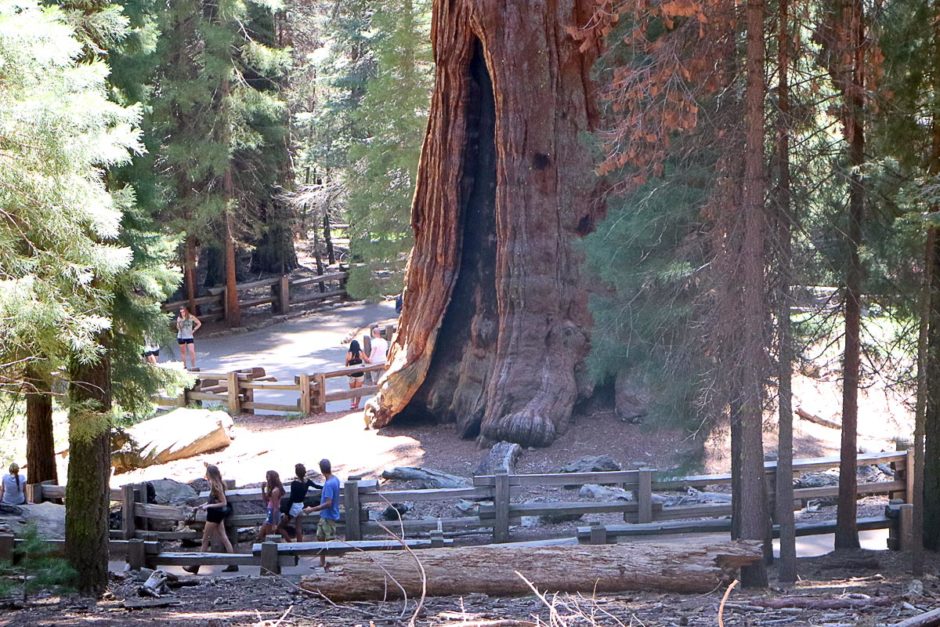
Photo-snapping at General Sherman, the world’s largest living thing.
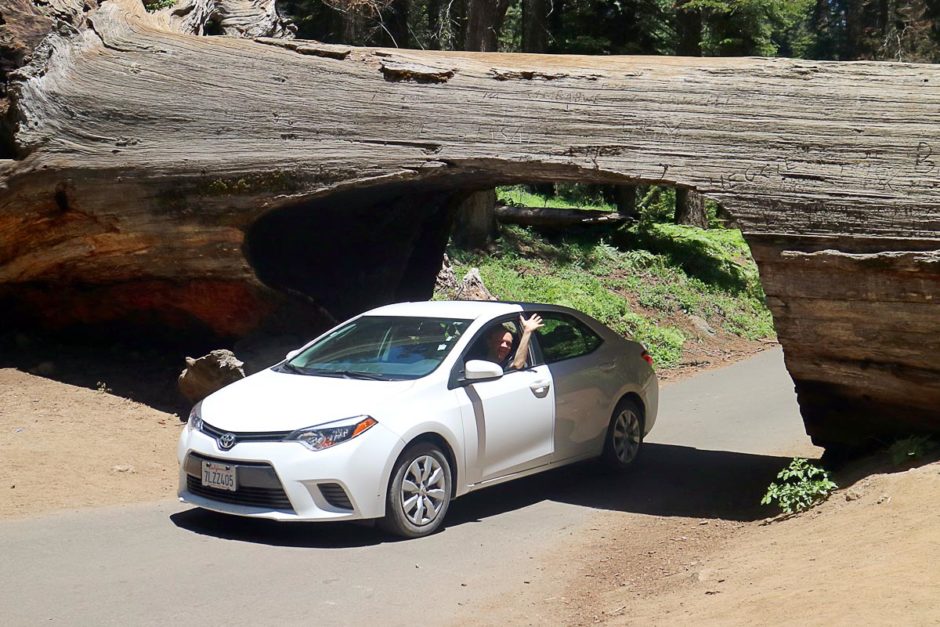
In another part of the Park is a fallen sequoia through which you can drive your car. The National Park Service wouldn’t dream of doing something exploitive and touristy like this nowadays, but they did in the past and the attraction remains. I’m no purist about these things, and we drove through it giggling maniacally. I even had Masayo get out while I circled around the drove through again for another Sequoia NP photo op.
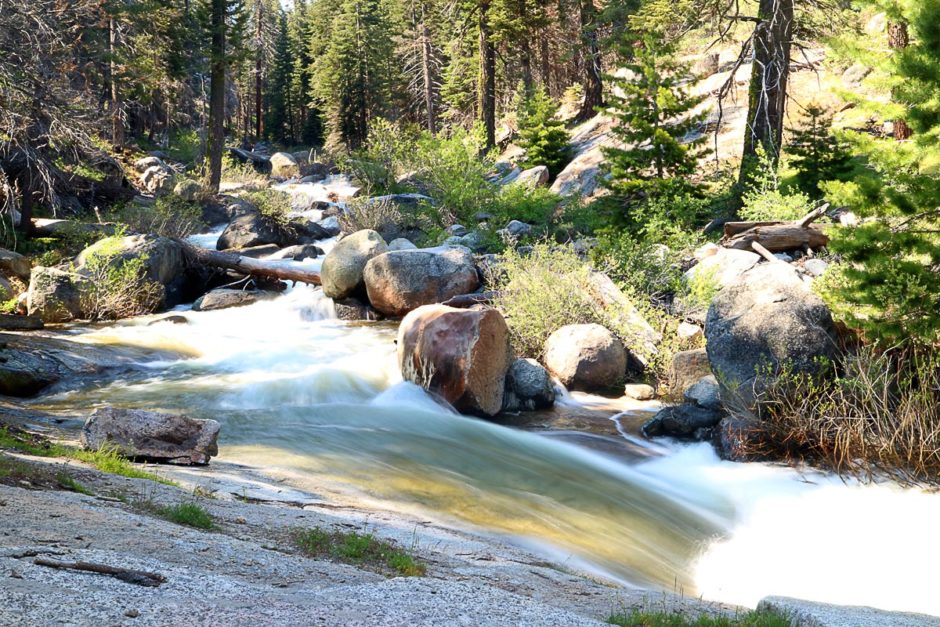
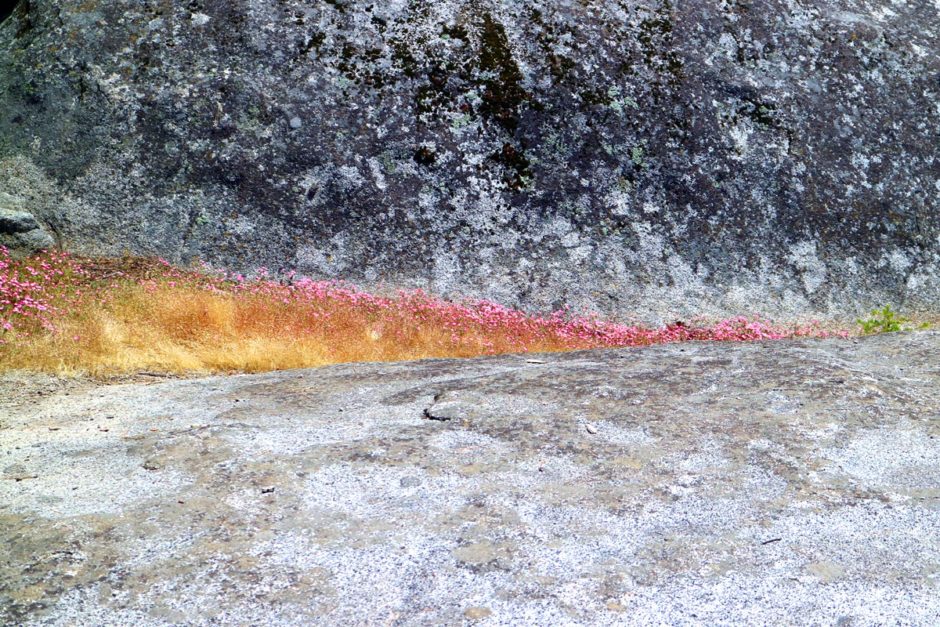
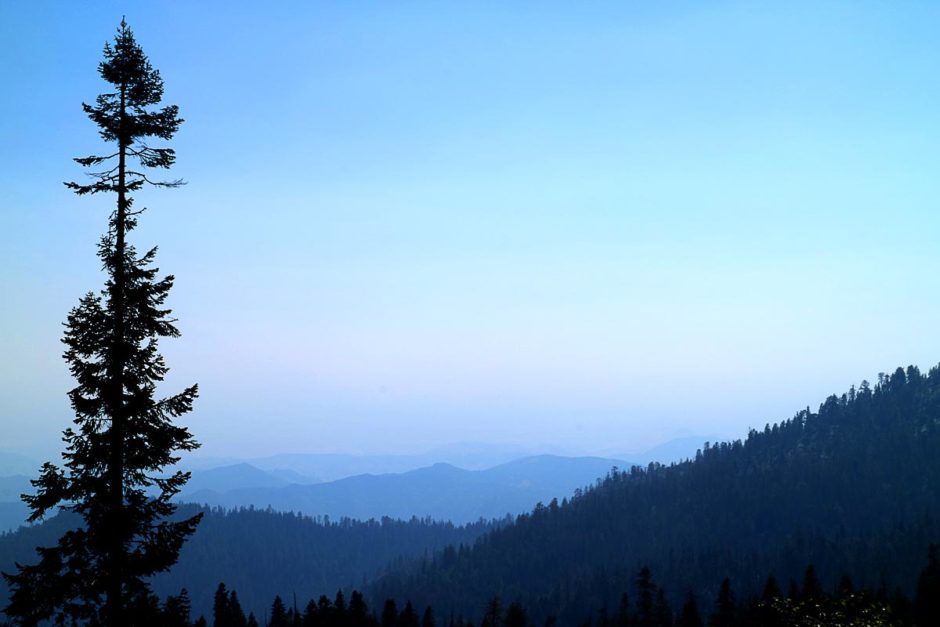
Then we went to find what the Park had to offer besides trees. And there were things: lovely streams and waterfalls dot the forest between the trunks and at certain points there are sweeping and dramatic views across the fading blue hills for miles in the distance.
At one overlook we pulled over and parked among the other cars, but when Masayo emerged from the car she became light-headed and stumbled. I caught her and, still worried about her recent health scares, led her immediately back to the car and we drove off. We never even learned what the viewpoint was. This became a reminder to take it easy, easy, easy.
Overall I felt that my nerdy, by-the-book approach to Sequoia National Park had been vindicated: it deserves its own day (or more); leave Kings Canyon for its own time. It’s quite transportive to find yourself in such a fecund and primordial forest, surrounded by plants that couldn’t possibly exist yet do – floral dinosaurs that cling to and even thrive in an obscure corner of California and nowhere else.
Sequoia National Park offers an experience special enough to cure what ails your spirit. All you have to do is go there.
So how did the trees do?
And how did being dwarfed by the giant sequoias treat my diabetes? Quite well, in fact.
The day began badly: This morning when I awoke my grumpy old blood sugar was 240, and after a sluggish breakfast and the drive to the Park, I was still 219. Then came the moment of truth, after spending all day walking and driving underneath the great trees.
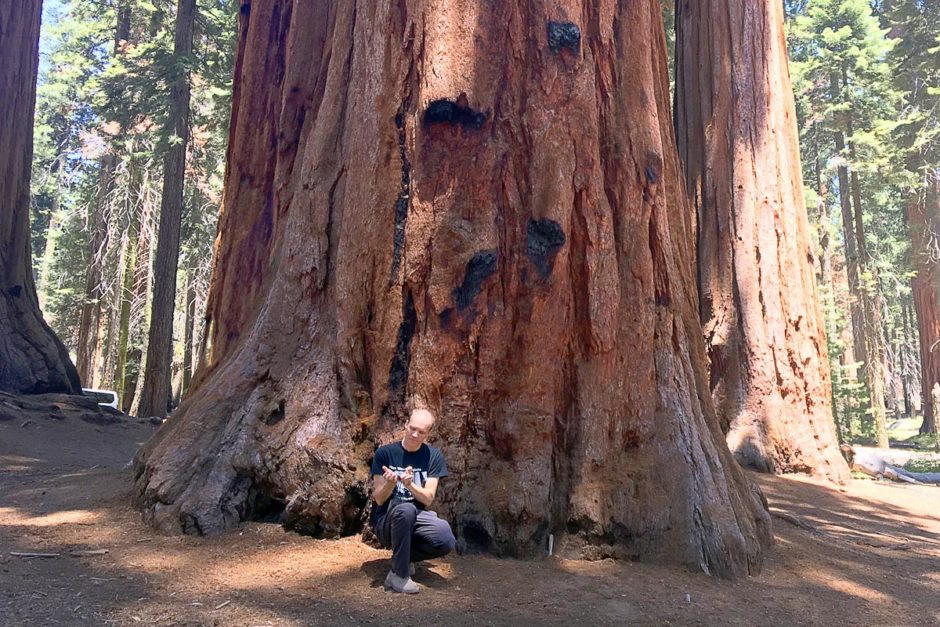
My One Drop meter does enjoy the scenic BG checks.
Afterwards, back in town before dinner, I was down to 56. Not great, but not high at least. After dinner, which was supermarket food in the hotel room and a large General Sherman beer from a store in the Park, my final pre-sleep reading was 167, just about perfect before bed.
The data sets are minuscule but are encouraging: Pre-park average – 230 mg/dL. Post-park average: 111 mg/dL. Any diabetic would gladly take that.
My hopes were realized: the older-than-time forest had indeed calmed me down. That doesn’t mean it will last necessarily, but letting go of worry and stress is definitely a good thing for diabetics. Thanks, Sequoia!
Thanks for reading. Suggested:
- Share:
- Read next: Day 72: To a canyon barely accessible by road
- News: Newsletter (posted for free on Patreon every week)
- Support: Patreon (watch extended, ad-free videos and get other perks)
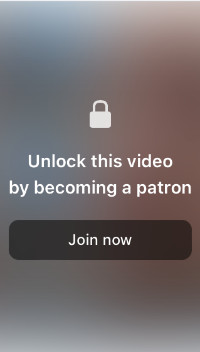
Support independent travel content
You can support my work via Patreon. Get early links to new videos, shout-outs in my videos, and other perks for as little as $1/month.
Your support helps me make more videos and bring you travels from interesting and lesser-known places. Join us! See details, perks, and support tiers at patreon.com/t1dwanderer. Thanks!
